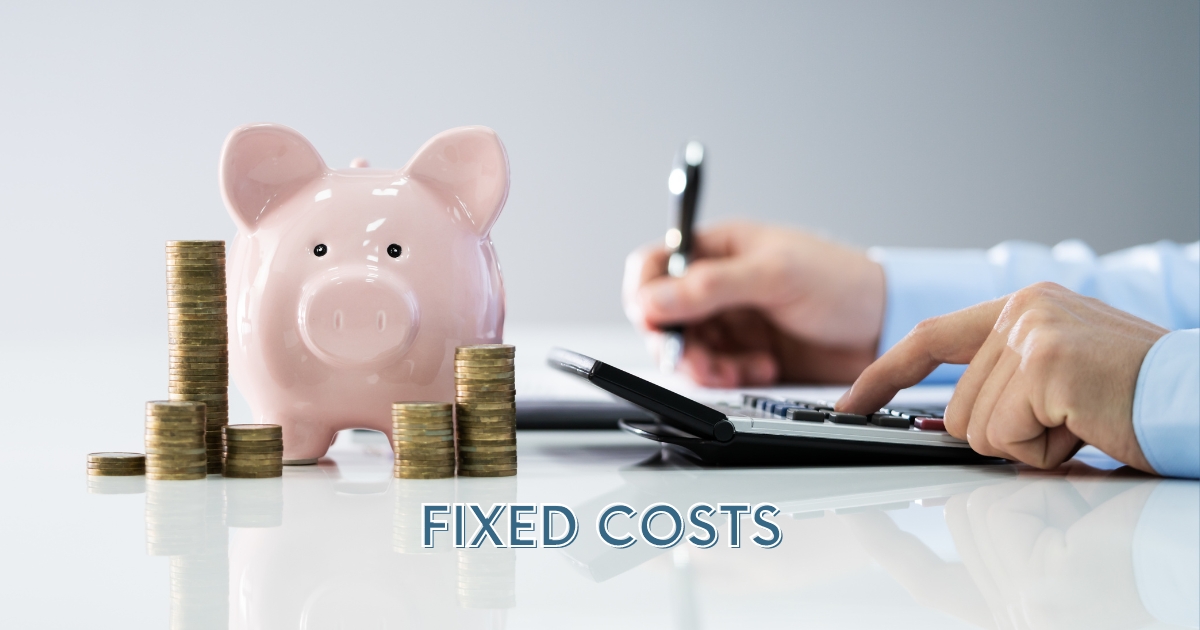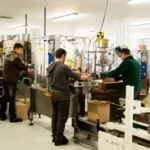In businesses, fixed costs are essential components that remain constant regardless of production or sales volume. The costs of certain factors won’t fluctuate such as rent, insurance and salaries even when activities in the organisation change. Knowledge and analysis of fixed costs are essential for the business to precisely analyse the profitability of the business.
In this blog, learn more about fixed costs and their role in the business world —
What is Fixed Costs?
Running a business is costly, each day some or other expenses are incurred. Fixed costs are business expenses that remain the same no matter how much a business produces or sells. It is also referred to as the regular costs that the business is obligated to pay and it is not affected by the profit that a business produces.
Examples of Fixed Costs
⇒Some of the examples of fixed costs are listed below :
- Rent/lease payments/mortgage
- Salaries
- Phone service
- Business Insurance
- Car lease payment
- Depreciation and property tax
- Equipment lease payments
- Utility payments
An important point to note here is that fixed costs are indirect and are not related to a company’s production of goods and services.
To further understand fixed costs, the costs associated with the business can be categorised into direct, indirect costs and capital costs in the income statement. And here it is noted as long and short-term liabilities in the balance sheet.
Cost can have a very strong influence on the profitability of the business. The cost structure of the company can be divided into fixed costs and variable costs. There are different cost structure analyses that help in assessing both fixed and variable costs.
Also Read : Absorption Costing: Pros and Cons
Characteristics of Fixed Costs
- Fixed costs are also called fixed expenses, it remains the same for some duration. It is usually established in the form of contract agreements or schedules. And the costs remain the same till the contract is completed or revoked.
- Fixed costs are the basic costs which help the business operations on a full scale.
- Direct and indirect costs are the categories of fixed costs, and it has the ability to influence the profitability in the income statement.
- Fixed costs are included in the indirect expenses part of the income statement, which affects the operating profit. Depreciation is a fixed cost which is documented as an indirect expense in the income.
- Fixed costs appearing on the income statement are duly reflected in both the balance sheet and cash flow statement.
- On the balance sheet, fixed costs can be categorized as either short-term or long-term liabilities. The cash flow statement presents any cash outflows associated with fixed costs as expenses.
- By minimizing fixed costs, a company can enhance its profitability by reducing expenses and ultimately improving its bottom line.
- Finally, fixed costs are a constant figure that doesn’t change or vary more often.
- Fixed costs can be classified as either direct or indirect. Direct fixed costs can be easily traced to a specific product or service, while indirect fixed costs are more difficult to trace.
- Fixed costs can be either controllable or uncontrollable. Controllable fixed costs can be managed by the business, while uncontrollable fixed costs are beyond the business’s control.
- Fixed costs can have a significant impact on a business’s profitability. By understanding how fixed costs affect profitability, businesses can make better decisions about pricing, production, and marketing.
Uncovering Fixed Cost: Total and Average Insights
The Total Fixed costs encompass the gross of all fixed costs that are required to run the business within the given duration(monthly or annually).
Total fixed cost = office warehouse space + website domain + product equipment, etc
The Average fixed cost comes to play when you have to track your company’s fixed costs differently. Average fixed costs refer to the total fixed costs paid by the company and it is divided by the number of units of goods the company is currently producing. This will reveal the fixed cost per unit, giving insight into the total cost a company should pay each time it produces a unit of your product.
Average fixed cost = Total fixed cost/ Total number of units made
How to Calculate Fixed Cost?
Fixed costs are calculated by employing a three-step process :
1. Identify expenses
Prepare a list of all your expenses.
Documents such as receipts, bank statements, commercial and employment lease agreements, other contracts etc. have to be analysed carefully.
All expenses have to be converted to a monthly calculation. If the expenses of the business are recurring on an annual basis, then it has to be divided by 12 to get the monthly costs.
2. Identify expenses which are fixed cost
After listing down all the expenses, highlight the costs that remain the same for a long duration unaffected by sales or activity volume. All these expenses are fixed costs.
3. Calculate all the fixed costs
After identifying the fixed costs, it has to be added together and calculated to find out the total sum of the fixed costs. Regardless of the quantity of goods produced or services rendered, these expenses must be paid on a monthly basis, unless they are annual expenditures such as insurance.
Advantages of Fixed Cost
- Unless any major capital adventure is undertaken, the fixed costs remain the same throughout the organisation’s production processes. Assume that you have bought a machine and installed it for your production processes. So a cost is incurred, i.e., a fixed cost and a depreciation value is added to this machine each year. These charges are added regardless of your organisation’s production levels.
- Fixed costs remain the same and will not change even if there are fluctuations in the production volumes.
- Even if there are changes in the production levels, fixed costs do not change. However, each unit of production tends to decrease the value of fixed costs. So more production and sales can be done without any issues.
- When a business produces a certain amount of goods or services within a specific range, the amount it produces and the costs involved usually stay consistent.
- For a particular accounting period, fixed costs tend to decrease the net income of the organisation. It has the capability to decrease tax liability, which will increase cash savings.
Disadvantages of Fixed Cost
- If your company doesn’t produce enough, the cost for each item made goes up, which is a big drawback of fixed costs. So if your business has high fixed costs, a slight decrease in production or sales volume will have an unfavourable outcome on your overall revenue.
- Suppose your business sells multiple products, it becomes very tricky to identify the direct relevance of the products and the fixed costs. To tackle this issue, allocation or apportion is done depending on the profitability of each division. This can lead to inaccurate measurements of financial productivity.
Fixed cost vs. Variable cost
A business can incur fixed costs and variable costs. As noted earlier, some expenses that a company incur and which do not change during the course of time is fixed cost. Fixed expenses are typically set for a certain time period and cannot be reduced per item when they are part of the direct costs on the income statement, which can change when calculating the costs of goods sold.
Variable costs are directly associated with production and sales volume. Hence, the variable costs keep changing based on the production or sales outputs. Whenever there is an increase in production levels, the variable costs tend to increase. In contrast, when production drops, the variable costs decrease. Variable costs change based on various industries.
→Special Considerations for Fixed Cost
Fixed cost is applied to the business to calculate different key metrics that include an organisation’s breakeven point and operating leverage.
→Breakeven analysis
A break-even analysis is when you use both fixed and variable costs to find the point where your revenue matches your costs. It’s a crucial part of analyzing your cost structure. An organisation’s breakeven production quantity is computed by the formula given below.
Breakeven Point= Fixed Costs / SPPU−VCPU
Where : SPPU = Sales price per unit and VCPU = Variable cost per unit
An organisation has to do a break-even analysis to make better decisions for its fixed and variable costs. The break-even analysis also affects the price a company decides to sell its products for.
→Operating leverage
So another aspect of cost structure management is operating leverage. The ratio of fixed to variable costs impacts a company’s operating leverage. When fixed costs are higher, it increases the operating leverage. Operating leverage can be computed by using this formula.
⇒Operating leverage = Q x (P – V)/ (Q X (P – V)) – F
• where, Q= Number of units
P= Price per unit
V= Variable cost per unit
F= Fixed costs
The higher operating leverage can help organisations produce more profit per additional unit.
Conclusion
Finally, fixed costs are an important part of business budgeting and planning. They can be difficult to manage, but they are pivotal for ensuring that a business can operate effectively. By comprehending the different types of fixed costs and how they can be managed, businesses can make better decisions about their financial future. Advanced systems like ERP software can help in managing fixed costs.







